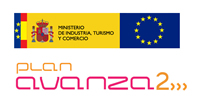
Green Terminals for Next Generation Wireless SystemsOne of the biggest impediments of future wireless communications systems is the need to limit the energy consumption of the battery-driven devices so as to prolong the operational times and to avoid active cooling. In fact, without new approaches for energy saving, there is a significant threat that the 4G mobile users will be searching for power outlets rather than network access, and becoming once again bound to a single location. GREEN-T aims to overcome the energy trap of 4Gmobile systems by investigating and demonstrating energy saving technologies for multi-standard wireless mobile devices, exploiting the combination of cognitive radio and cooperative strategies while still enabling the required performance in terms of data rate and QoS to support active applications. This notion is further extended by investigating lightweight security approaches, which is a pivotal requirements of 4G systems that will constitute a multitude of players from network operators to services provides cooperating under a converged service platform.
|
Green-T Key Data
GREEN-T...
... is a CELTIC-Plus project |
||
Celtic-Plus is an industry-driven European research initiative to define, perform and finance through public and private funding common research projects in the area of telecommunications, new media, future Internet, and applications & services focusing on a new "Smart Connected World" paradigm. Celtic-Plus is a EUREKA ICT cluster and belongs to the inter-governmental EUREKA network. |
||
... focuses on the following topics |
||
- Energy-Efficiency - Cooperative Systems - Cognitive Radio - Security |
||
...has in its consortium partners from 8 countries: |
||
- Portugal - Spain - Ireland - Sweden - Finland - Cyprus - Korea |
||
 |
 |
 |
|||
 |
|||||
 |
 |
||||
The participation of the Portuguese partners is financed by: |
|||||
 |
|||||
Project GREEN-T (TSI-020400-2011-16): Co-financed by the Ministry of Industry, Energy and Tourism within the National Plan for Scientific Research, Development and Innovation 2008-2011 |
|||||
|
|||||



